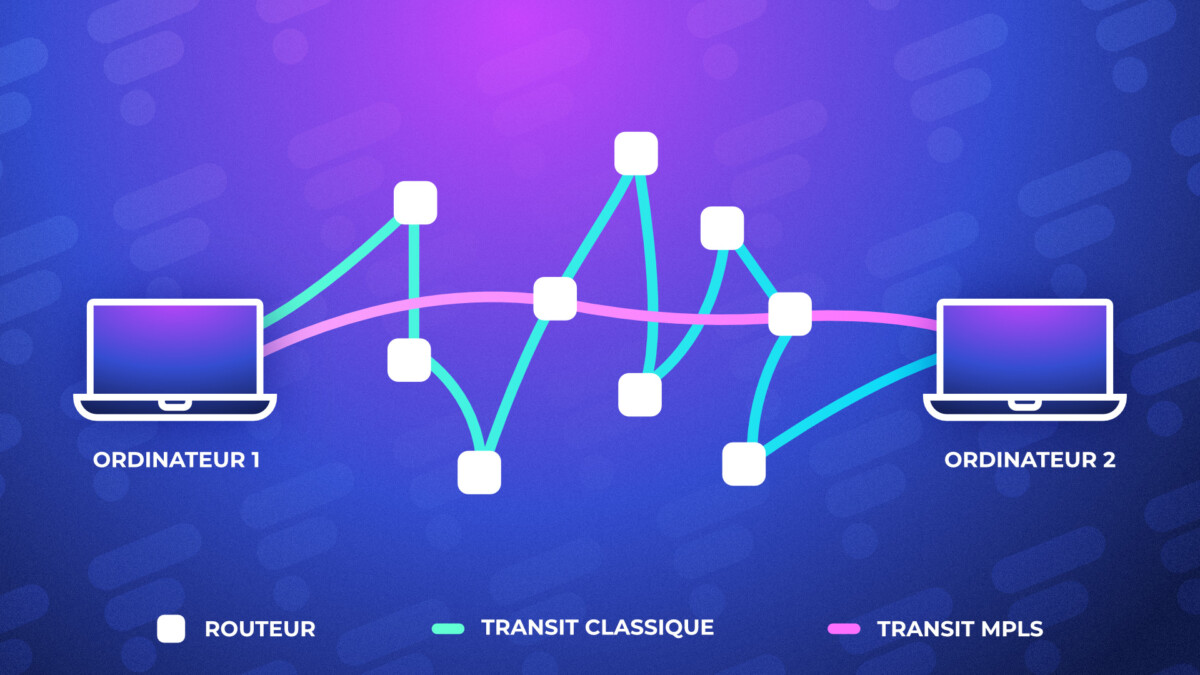Within a computer network, multiprotocol label switching (or MPLS for MultiProtocol Label Switching) is a data transport technology. It improves the transfer speed within a network, regardless of the type of traffic. Here is everything you need to know about the MPLS network.
To securely transfer data over a network, there are several solutions. On the one hand, we find the VPN, which creates an encryption tunnel between two devices connected to the Internet in order to send the encrypted data there. On the other hand, we can rely on the MPLS network which optimizes the transfer of data within a private network, very often connected to the intranet. While individuals favor VPNs, companies have been relying on MPLS for two decades to share sensitive documents quickly.
Although its principle seems similar to that of a VPN, MPLS has its own advantages and disadvantages. We tell you everything about this technology.
MPLS, how does it work?
Multi-protocol label switching (MultiProtocol Label Switching or MPLS) is a network technology designed to optimize transfer speed within a private network, whether or not it is connected to the Internet.
MPLS acts on the transfer of data “packets” by applying a label to them to facilitate their switching from one router to another within an MPLS network.

In traditional IP routing, each router reads the destination IP address of a packet and then consults an extremely long routing table to determine which path to take.
Within an MPLS network, on the other hand, each router has a table associating an input port/label with an output port/label. All they have to do is read the last label put in place to choose the path to follow. This marking makes it possible to optimize the path taken by the packets from one client router to another.
As a good example worth all the long talk, one can compare the operation of MPLS to baggage in a connecting flight. Rather than determining at each airport the route to take for the suitcase to arrive safely, baggage handlers will apply a label from the start which will indicate to baggage handlers at the following airports the most optimal route to follow. This allows the baggage to be transferred more quickly and does not delay the flight.
What is MPLS?
Being a private network, MPLS is configured and managed by a single operator. This takes care of network maintenance as well as supervision and monitoring. The advantage is that the company using an MPLS network only has to deal with a single contact. This reduces processing times in the event of a problem since it is not necessary to go through a dozen intermediaries.
What’s more, a single firewall is enough to secure all the sites. However, unlike a VPN, data passing through an MPLS network is not encrypted. They are therefore easily identifiable in the event of an intrusion. Fortunately, it is possible to integrate a VPN within an MPLS at network layer 2 (L2VPN) and 3 (L3VPN).
The MPLS protocol also provides excellent QoS management (Quality of Service), i.e. the prioritization of certain streams (such as voice, video) over other streams. This optimized management makes it possible, for example, not to suffer from any slowdown or loss of packets during a videoconference.
One of the weak points of the MPLS network is its cost. The resources needed to set up an MPLS network require a strong investment, both financial and human. In addition to the price of the hardware, it is imperative to go through computer engineers to configure the network. A constraint that makes the MPLS network less user friendly than a VPN.
Do you use Google News (News in France)? You can follow your favorite media. Follow Frandroid on Google News (and Numerama).
